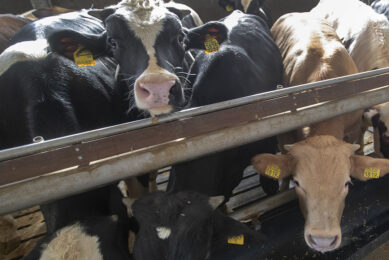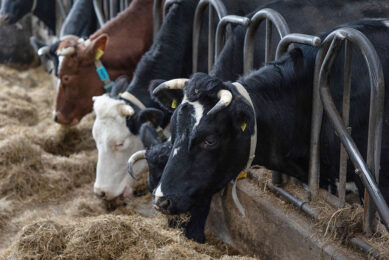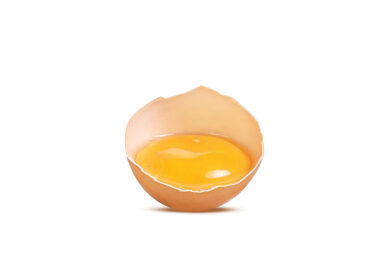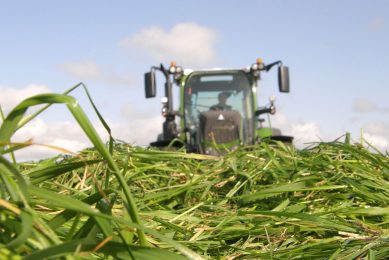Corn stover valuable cattle feed
A new process can improve feedlot’s profits using stalks, leaves, cobs of corn currently left on field.
New research has shown that a substantial portion of the grain in cattle feed can be effectively replaced with corn stover—the plant’s stalks, cobs and leaves—when these harvest residues are treated with a common food ingredient known as hydrated lime, or pickling lime.
The alternative feeding strategy, which could improve feeders’ financial returns by lowering input costs without impacting the animals’ physical development, has been validated through recent studies conducted at Iowa State University and the University of Nebraska.
Improving digestibility
In cattle-feeding trials, adding hydrated lime to corn stover rendered the plant material sufficiently digestible to constitute up to 25% of cattle rations after the treated stover was combined with wet distillers grains and solubles.
WDGS, a protein-rich feed ingredient, is a co-product of corn ethanol production. ADM is a leading supplier of distillers grains to the livestock industry.
Hydrated lime, or calcium hydroxide is used in a variety of food applications, from pickling and preserving fruits and vegetables to adding calcium to fruit juices and baby formulas. It is formed by mixing water with calcium oxide derived from limestone.
Treatment process
The treatment process involves combining ground or chopped stover with the hydrated lime solution, then storing the treated stover in an oxygen-free container—typically a plastic “ag bag” or a bunker—for at least a week.
The solution loosens the chemical bonds between the stover’s less-digestible lignins and its more digestible components.
The relaxing of these bonds enables natural enzymes in the cattle’s front stomach to effectively digest the stover.
The same treatment process can make wheat straw digestible to ruminants as well.
University trial
Over the course of a six-month Iowa State University trial involving 210 steers, the treatment enabled scientists to cut the percentage of grain in animals’ rations by half—from 70 to 35%—without impacting the animals’ growth or development.
Stover, WDGS and supplements made up the remaining 20 percent, 40 percent and 5 percent of the ration’s dry weight, respectively. Use of the treated-stover rations resulted in a profit per steer of up to $119.











